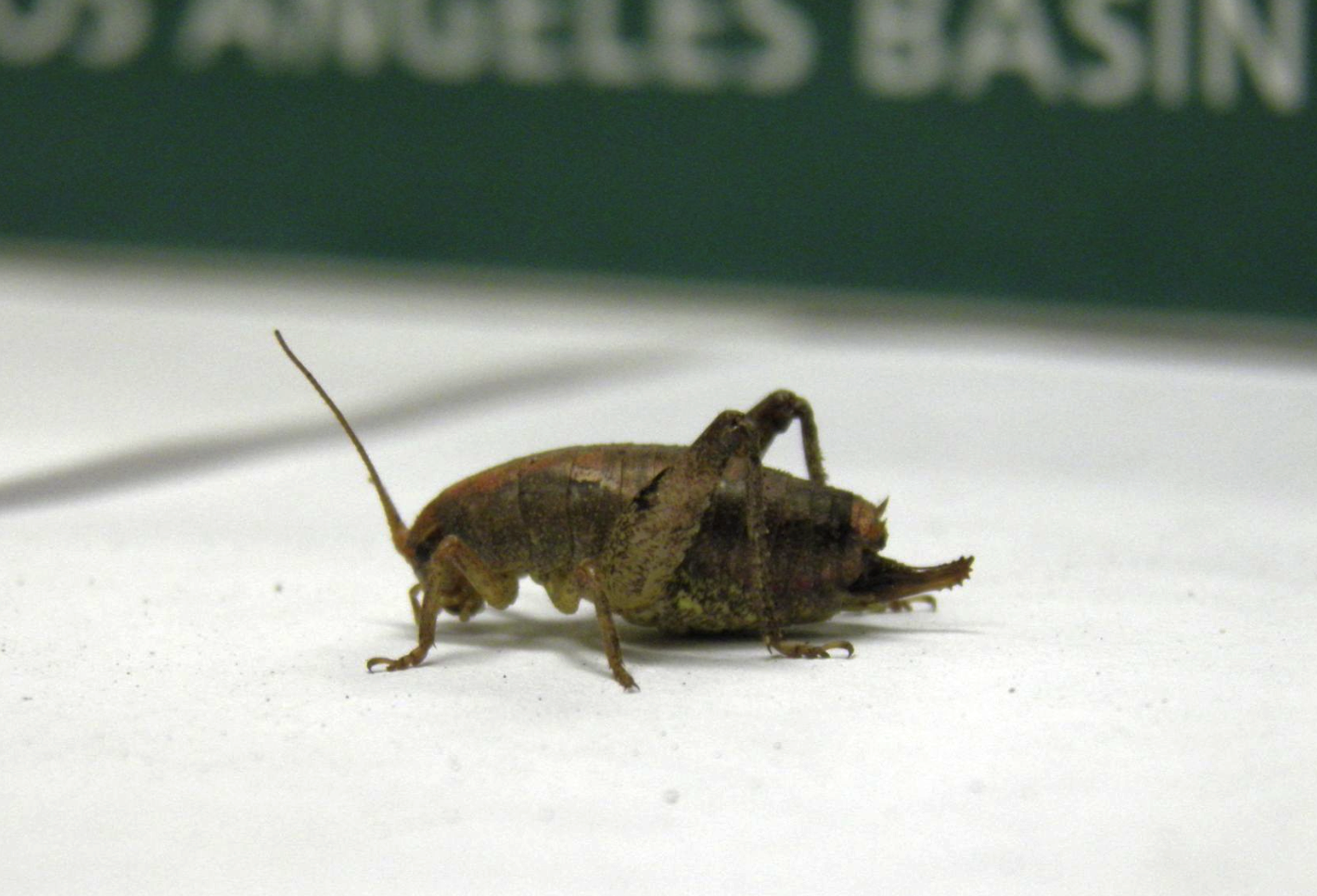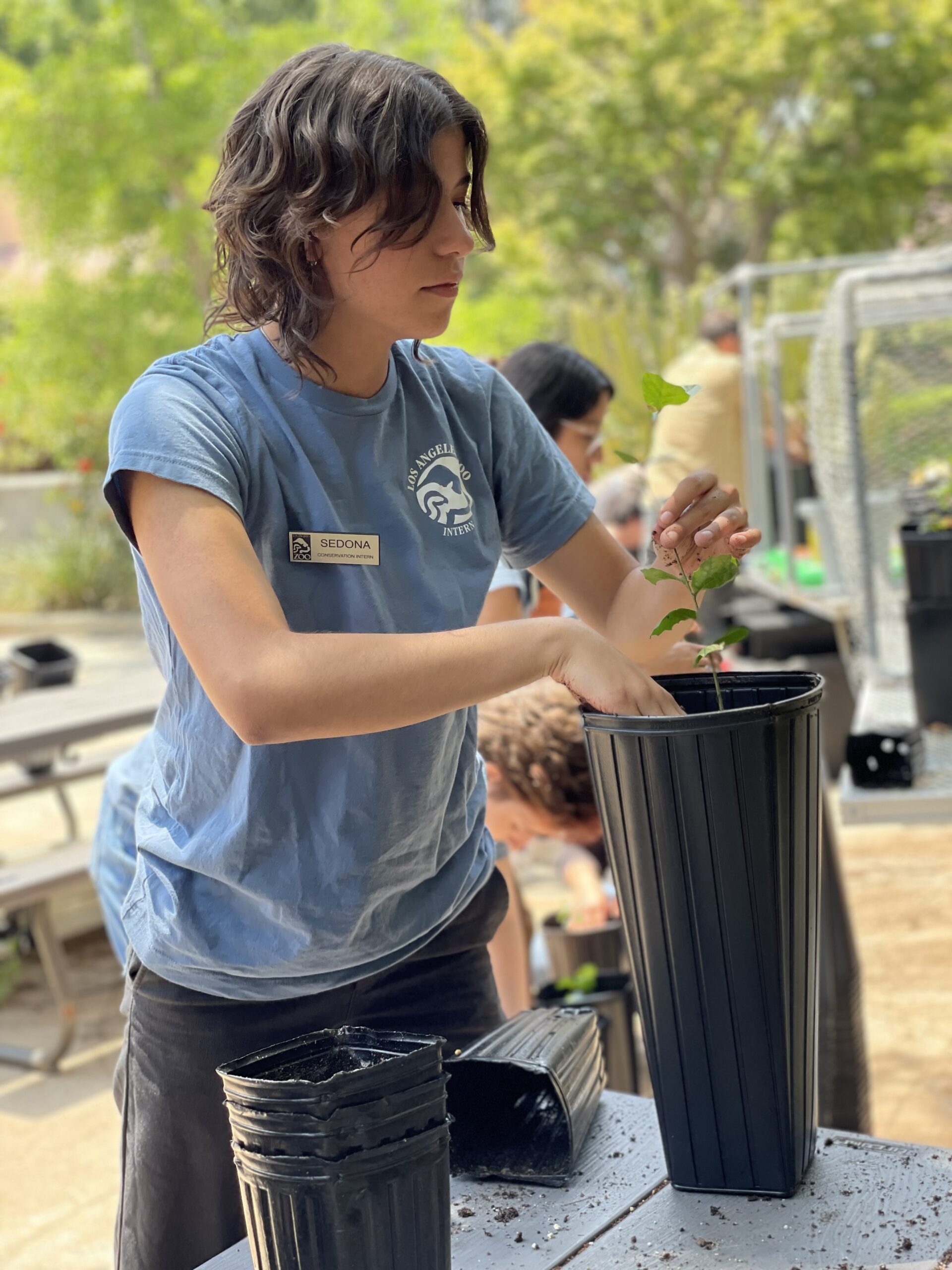Joining the Conservation Crew: My Experience Interning at the Los Angeles Zoo
As an animal lover and environmentalist, it has been a dream of mine since I was a young child to work at a zoo. So when I saw that the Wrigley Institute was hosting a conservation-focused internship at the Los Angeles Zoo, I knew I wanted to apply.
My name is Sedona Silva, and I’m currently a sophomore pursuing a B.S. in environmental studies. I was fortunate to receive a Wrigley Institute Environmental Summer Award to support my internship at the LA Zoo this summer.
Los Angeles is a biodiversity hotspot, meaning it’s a region that is home to a rich variety of plant and animal species found nowhere else in the world, many of which are endangered or threatened due to habitat loss and other anthropogenic causes. We often think of climate change as a distant matter, an intangible concept that isn’t necessarily relevant to our lives right here, right now. This is far from the truth. During my time at the zoo, I got to experience firsthand the conservation efforts of critically endangered species such as the California condor and the southern mountain yellow-legged frog, both of which are endemic to California. Both of these species almost went extinct due to environmental changes from increased wildfires, drought, pesticide use, habitat degradation, and other impacts of global warming. The LA Zoo’s breeding and reintroduction programs have been incredibly successful at maintaining wild populations of these animals, however, the threats of climate change still persist.
One part of the animal kingdom is often neglected when discussing conservation: invertebrates—a group that includes insects, arachnids, and all other animals without a backbone. While they might be less glamorous than a condor with a 10-foot wingspan, invertebrates serve as the foundation for an ecosystem, providing services such as pollination, decomposition, soil maintenance, and nutrient cycling. They are especially important to conservation research because their biodiversity levels serve as indicators for the impact of climate change on ecosystem health.
During my internship, I worked with a small group of fellow interns to develop a research project focused on the native wildlife in and around the LA Zoo/Griffith Park area. My research group was focused on the impacts of non-native plants on ground-dwelling invertebrate communities. Within the LA Zoo, there are two main regions of undeveloped land that are currently closed to the public, including six acres of native oak woodland habitat. One of these sites, an area designated for restoration and development of a native California exhibit under the LA Zoo’s most recent Vision Plan, is heavily disturbed by non-native vegetation such as mustard grass and eucalyptus. These sites are where we did the majority of our fieldwork, comparing microhabitat analysis and soil surveys of plots that contained native plants to those that contained non-natives.

This was my first experience doing any sort of field research, but under the guidance of my mentors, I learned a variety of techniques such as soil core sampling, GPS mapping, transect sampling, leaf litter sifting, and soil chemical analysis. Each hour I spent out in the field, I became more aware of the abundance of life that exists beneath our feet. From the tiniest mite to the most formidable centipede, each of these invertebrates plays a valuable role in their environment. All in all, we collected and identified over 120 different species of invertebrates living in the leaf litter of the field sites.
After compiling our data, observing and documenting our specimens under the microscope, and performing statistical analysis, we found that invertebrate biodiversity was significantly higher in areas with native plants such as coast live oak, laurel sumac, elderberry, and toyon. Through analyzing the soil macronutrient and organic matter content, we found a strong correlation between native plants and rich, healthy soil.

While our project was a great way to get some fieldwork experience and connect with our local environment, it also has broader implications for the local community and the LA Zoo’s future plans for conservation. Our research findings will help to inform the development of the California exhibit—where visitors will be able to experience our local ecosystem in its true, uninterrupted form. Our research will also help guide the restoration of the ecologically valuable Oak Woodland habitat.
While the majority of my work was done out in the field and not with the animals on exhibit in the zoo, I still had many opportunities to interact with and learn from the animal care staff. I also got to communicate the importance of my research to the zoo staff and visitors, which challenged me to refine my science communication skills. My experience this summer has fundamentally changed my perspective on the role of zoos in society, specifically as it relates to conservation and environmental justice. I often hear the idea, especially from animal rights activists, that zoos are inherently unethical—placing animals in captivity for the sole entertainment of humans. Given the history of zoos as menageries meant for the entertainment of wealthy, upper-class people, I can see how this perspective is difficult to let go of. However, as an institution accredited by the Association of Zoos and Aquariums (AZA), the LA Zoo prioritizes the highest level of animal care, conservation, sustainability, and equity initiatives. The vast majority of animals in the zoo are either rescued from illegal wildlife trafficking, part of conservation programs, or were taken in because their natural habitat was destroyed due to human development. When talking with the animal care team, touring the veterinary hospital on zoo grounds, and experiencing everything that goes on behind the scenes of running a zoo, I could really feel the love and respect that this organization has for all parts of life.
It’s been so meaningful to feel a true sense of belonging within the conservation community. Through my work this summer, I’ve gained more confidence in my identity as a scientist and environmentalist. The connections I made with my mentors and fellow interns will surely be invaluable as I continue on my career path in the conservation field—I know that I will forever have a home in the Los Angeles Zoo community.
Sedona Silvia is supported by the Scully Undergraduate Award and a gift from the Zinsmeyer Family.

